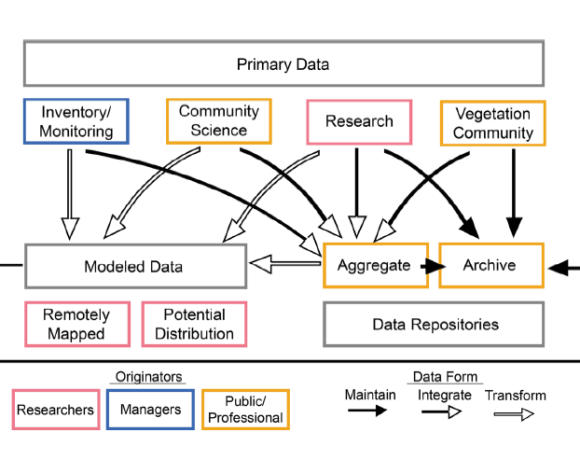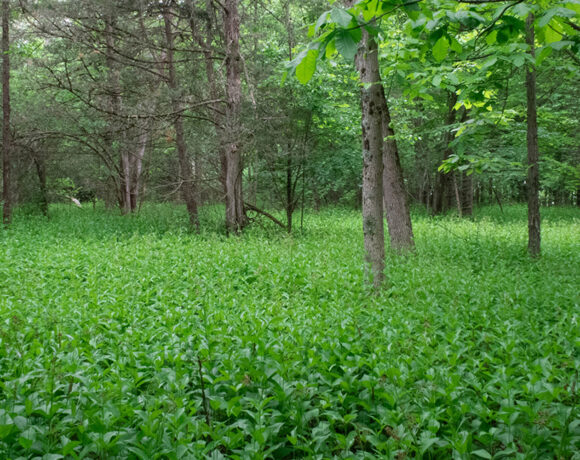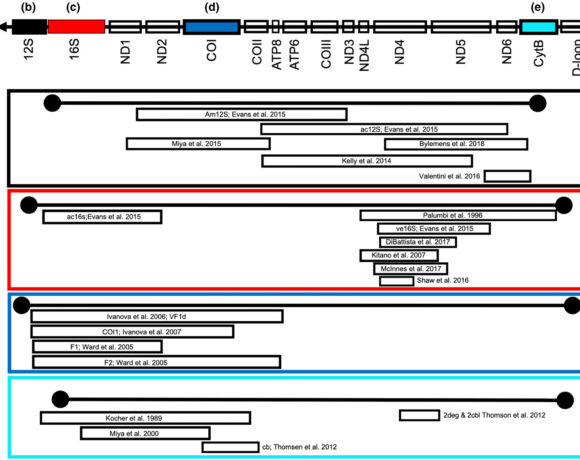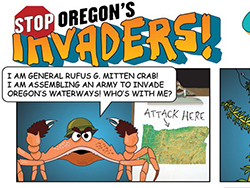Sensing the need to bridge the research-practice divide for invasive species detection and monitoring
Parker, K.; Elmes, A.; Boucher, P.; Hallett, R.A.; Thompson, J.E.; Simek, Z.; Bowers, J.; Reinmann, A.B. Crossing the Great Divide: Bridging the Researcher–Practitioner Gap to Maximize the Utility of Remote Sensing for Invasive Species Monitoring and Management. Remote Sens. 2021, 13, 4142. https://doi.org/10.3390/rs13204142
Summary written by Justin Dalaba, edited by Audrey Bowe
As we map out the New Year and take stock of work ahead, we’re excited to feature recent work from our New York State partners.
Summary
The knowing-doing gap is a well-established phenomenon in invasive species and conservation. In this paper, a team of researchers and practitioners tackles the disconnect between research and application in the field of remote sensing for invasive species. The authors summarize over 40 years of published literature, and draw from their own experience with the invasive Hemlock Woolly Adelgid (HWA) to present a framework and recommendations for advancing collaboration and monitoring. Their findings suggest that while research on Remote Sensing (RS) applications for invasive species is growing, it is often not directly accessible to, or utilized by practitioners. Specifically, they identify RS in conjunction with field validation and local knowledge as an opportunity to advance detection and mapping invasive pest impacts (e.g. HWA, Gypsy moth, Dutch Elm Disease). As a starting point to bridge this great divide, the team provides a suite of recommendations and best practices for how researchers and practitioners can work together to produce mutually beneficial results.
Key take-aways:
- Practitioners and researchers working together to leverage their respective resources and expertise offers great potential for developing novel approaches to addressing pressing and complex invasive species threats (e.g. Remote Sensing technologies), while minimizing repetition of effect and data mismatches
- RS products are only as good as the field data used to calibrate and validate models, hence the importance of collaborations between researchers developing models and practitioners who can validate them on the ground
- Mutual benefits of collaboration can include additional funding to lengthen studies, increased resources for field data collection, and improvement of RS data quality
Management implications:
- Applying RS models in conjunction with valuable field data or local knowledge saves on costly and time-intensive use of resources
- Easy to use RS products that can identify locations of hemlock trees and areas where stands might be in decline can greatly improve efficacy and efficiency of mapping and monitoring efforts (e.g. HWA infestation)
- Incorporating ecological knowledge and factors that may contribute to the impacts of an infestation can help practitioners prioritize treatment (e.g. HWA makes hemlock trees more vulnerable to drought, so impacts are more severe on steep/south facing slopes than with wetter soil conditions)
- Integrating remote sensing outputs with data on predictive variables can also help map and inform invasive species spread with climate change or other environmental changes.













